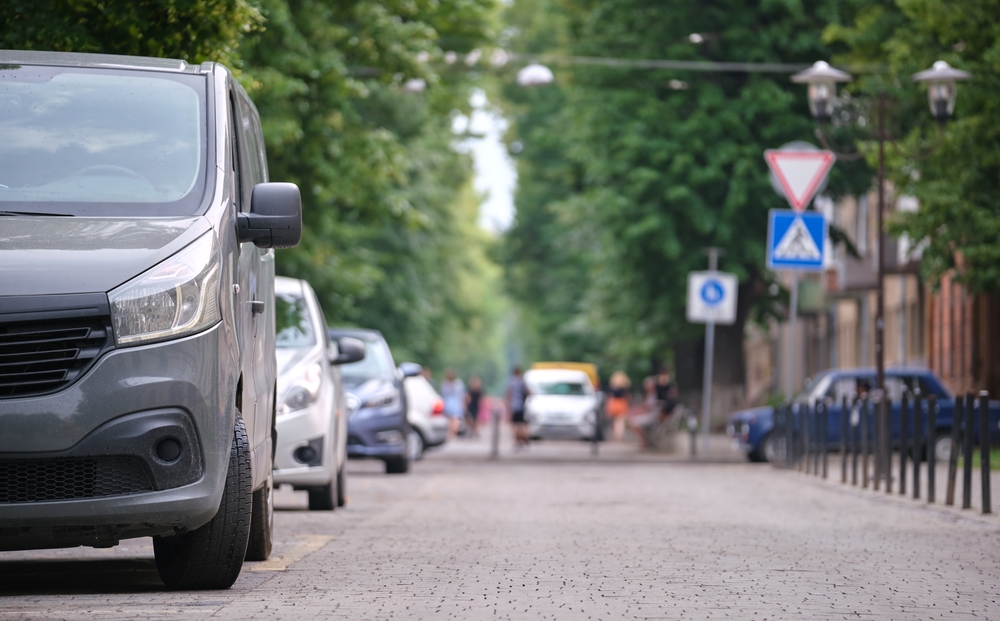Contenido
ToggleThe speed at which vehicles travel on urban streets affects traffic flow, road safety, and residents’ quality of life. In Mexico, the General Mobility and Road Safety Law establishes that speed limits should be based on scientific evidence, keeping them below a safety threshold necessary to protect the life and integrity of road users.
The maximum speed limits are as follows:
- 20 km/h** in hospital areas, nursing homes, shelters, and group homes.
- These areas require special attention due to the vulnerability of their users, who may be patients, elderly people, or those in vulnerable situations.
- Reducing the speed to 20 km/h allows for a greater capacity to react to unforeseen events, which is crucial in environments where mobility may be limited, or medical emergencies are frequent.
- 20 km/h in school zones and surroundings on secondary and tertiary roads; up to 30 km/h in school zones and surroundings on primary roads and highways.
- Proximity to schools means the constant presence of children and adolescents, who are more prone to traffic accidents due to their unpredictability.
- Low speeds ensure that drivers have the necessary time to stop if a child unexpectedly crosses the street.
- 30 km/h on secondary and tertiary streets.
- These roads are typically located in residential or commercial areas with high pedestrian traffic.
- Keeping a maximum speed of 30 km/h significantly reduces the risk of serious accidents, facilitating safe coexistence between vehicles and pedestrians.
- 50 km/h on primary roads without controlled access.
- These roads are important arteries within the city, designed for higher vehicle flow.
- At 50 km/h, drivers can still maintain proper control of the vehicle, avoiding accidents in areas with direct access to properties and businesses.
- 80 km/h on central lanes of controlled-access roads.
- These roads are designed for faster and smoother traffic, with fewer disruptions.
- Central lanes with controlled access minimize intersections and pedestrian crossings, allowing for higher speeds without compromising safety.
- 80 km/h on state highways outside urban areas; 50 km/h within urban areas.
- State highways connect various towns, but passing through urban areas increases the risk of traffic accidents.
- Limiting speed to 50 km/h within urban zones protects residents and road users, while 80 km/h in rural areas allows for efficient and safe transit.
Speed management is a crucial component of the Safe System approach, which seeks to reduce the risk of serious and fatal accidents. This approach acknowledges that humans make mistakes and that road design and speed limits must minimize the consequences of these errors.

Impact of speed on road safety
Controlling speed on our streets and highways can save lives. Each year, it is estimated that 7,532 lives could be saved if speed limits are properly managed. Excessive speed not only increases the likelihood of traffic accidents but also raises the severity of resulting injuries.
The operating speed of streets should be considered based on their physical characteristics and land use. For example, in areas with high pedestrian or cyclist activity, speeds should be lower to ensure the safety of all road users. Additionally, streets should be designed to encourage safe speeds through measures such as:
- Traffic calming: Use of physical elements such as speed bumps, traffic reducers, and chicanes.
- Road design: Complete streets that include wide sidewalks, bike lanes, and green spaces to reduce vehicle speed.
- Clear signage: Visible and consistent speed limit signs.
Establishing and properly managing speed limits on urban streets is essential to improve road safety and protect all road users. The General Mobility and Road Safety Law of Mexico provides a framework based on scientific evidence, which, when correctly applied, can save lives and improve quality of life in cities.
Recommendations to Prevent Speed-Related Traffic Accidents
To reduce the risk of traffic accidents and improve road safety, drivers should adopt the following practices:
- Respect speed limits: Follow the speed limits established for each type of road, paying special attention to areas with lower limits, such as school zones and hospitals.
- Adapt speed to environmental conditions: Reduce speed in conditions of low visibility, bad weather, heavy traffic, or when approaching intersections and pedestrian crossings.
- Maintain a safe distance: Ensure an adequate distance between vehicles to allow sufficient reaction time in case of sudden braking.
- Avoid distractions: Stay focused on driving and avoid using mobile devices or other distractions that could divert attention from the road.
- Drive cautiously in residential areas: Be especially attentive in residential zones where children, pets, and pedestrians are frequently present.
- Participate in road safety education programs: Attend courses and workshops on road safety to stay updated on best practices and traffic regulations.
- Perform regular vehicle maintenance: Ensure the vehicle is in good condition, particularly the brakes, tires, and lighting systems.
